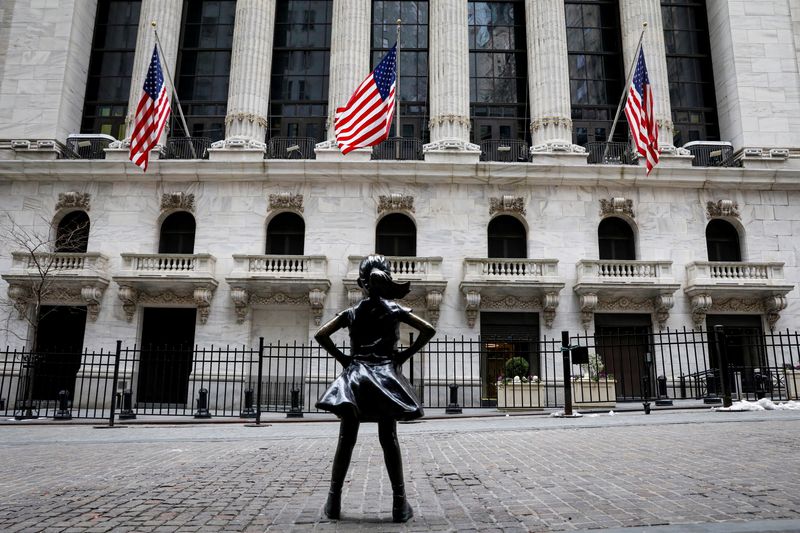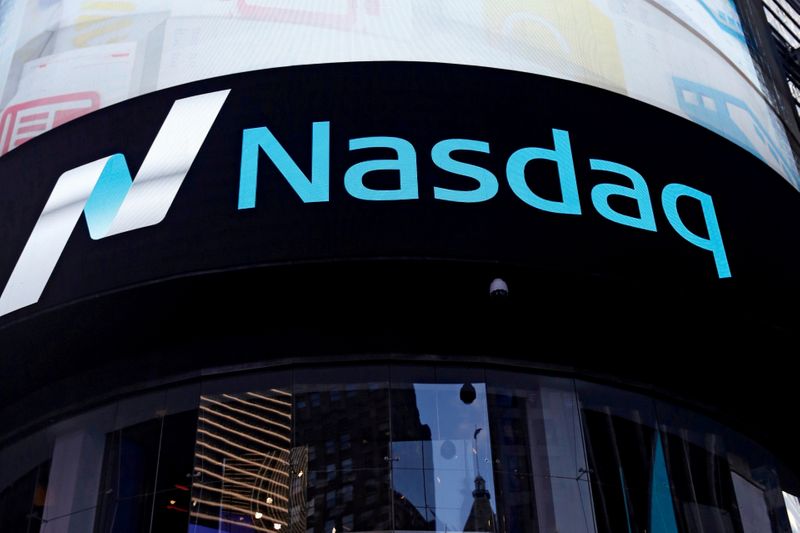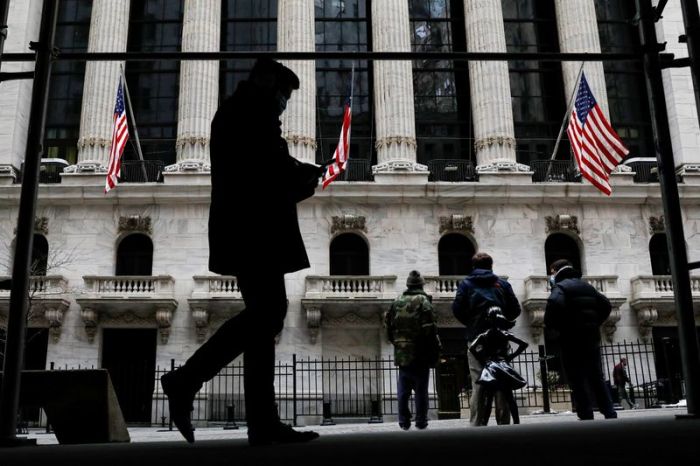(Reuters) – Wall Street ended sharply lower on Thursday, leaving the Nasdaq down nearly 10% from its February record high, after remarks from Federal Reserve Chair Jerome Powell disappointed investors worried about rising longer-term U.S. bond yields.
A decline of 10% from its February record high would confirm the Nasdaq is in a correction.
The benchmark 10-year Treasury yield spiked to 1.533% after Powell’s comments, which did not point to changes in the Fed’s asset purchases to tackle the recent jump in yields. It still held below last week’s one-year high of 1.614%.
Some investors had expected the Fed might step up purchases of long-term bonds, helping push down long-term interest rates.
“The market has been worried about the rise in long-term interest rates and the Fed chairman in his commentary didn’t really push back towards this increase in rates and the market took it as a signal that yields could rise further, which is what has happened,” said Scott Brown, chief economist at Raymond James in Florida.
GRAPHIC-Nasdaq tumbles 10% from February record high – https://graphics.reuters.com/USA-STOCKS/NASDAQ/yxmvjxmanvr/chart.png
In a day of heavy trading on Wall Street, the Nasdaq wiped out all of its year-to-date gains and ended down 9.7% from its record closing high on Feb. 12. The S&P 500 has declined over 4% from its record high close on Feb. 12.
Data showed the number of Americans filing for jobless benefits rose last week, likely boosted by brutal winter storms in the densely populated South, though the labor market outlook is improving amid declining new COVID-19 cases.
The crucial monthly payrolls report is expected on Friday.
Wall Street has been under pressure in recent sessions as a spike in U.S. bond yields hurt valuations of high-flying tech stocks. Stocks expected to thrive as the economy reopens outperformed in recent weeks due to expectations of a new round of fiscal aid and vaccinations.
The S&P 500 energy sector index jumped 2.5% and reached a one-year high on the back of higher oil prices.
The Dow Jones Industrial Average fell 1.11% to end at 30,924.14 points, while the S&P 500 lost 1.34% to 3,768.47.
The Nasdaq Composite dropped 2.11% to 12,723.47.
Volume on U.S. exchanges was 18 billion shares, compared with the 15 billion average for the full session over the last 20 trading days.
Apple Inc, Tesla Inc and PayPal Holdings Inc were among the largest drags on the S&P 500. Tesla dropped almost 5%.
Tech stocks are particularly sensitive to rising yields because their value rests heavily on future earnings, which are discounted more deeply when bond returns go up.
“Valuations are at the high end of historic ranges, so you are seeing selling, especially in the higher valuation areas like the Nasdaq and tech general,” said Tim Ghriskey, chief investment strategist at Inverness Counsel in New York.
Declining issues outnumbered advancing ones on the NYSE by a 3.79-to-1 ratio; on Nasdaq, a 5.62-to-1 ratio favored decliners.
The S&P 500 posted 28 new 52-week highs and no new lows; the Nasdaq Composite recorded 173 new highs and 151 new lows.
(Reporting by Noel Randewich in Oakland, California; Additional reporting by Shashank Nayar and Nayar Medha Singh in Bengaluru; Editing by Maju Samuel and Lisa Shumaker)


























